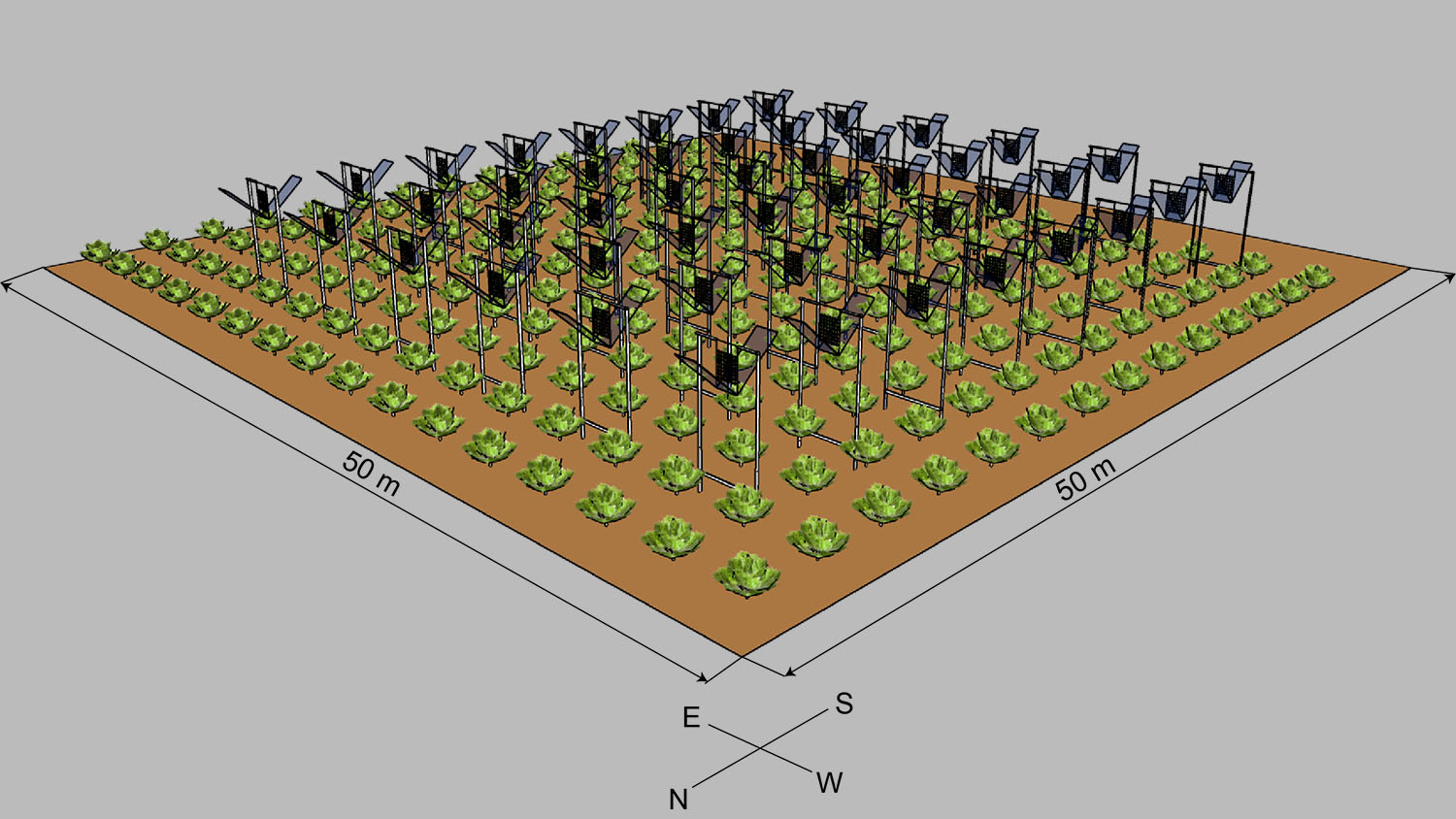Open Field Agrivoltaics
The increasing world population has created an unprecedented demand for food, energy and water resources.
Collocating solar photovoltaic (PV) technology with food production in the fields can fulfill growing food and energy demands.
A spectral-beam-splitter with integrated-photovoltaic (BSIPV) system utilizes a spectral selective optical technology. This allows visible radiation to reach the plants, while infra-red radiation is redirected to photovoltaic panels.
The goal of this project is to evaluate the performance of a BSIPV system on a PV farm, in terms of crop yield and days to harvest for different crops.
The transformative research being performed from this project is part of the grant proposal development services offered by the Controlled Environment Agriculture (CEA) Coalition.

Currently, most open field agrivoltaics are based on standard, flat plate PV devices. Although this system provides high efficiency, the materials absorb all light including the photosynthetically active radiation (PAR) which is essential for crop growth.
The Plan Forward
- Using environment-plant physiology-energy mathematical models, we are modeling the system’s performance for several crops in terms of crop yield, plant growth uniformity, and energy generation.
- A proof-of-concept system is currently in testing in fields across North Carolina.

We have plant scientists (mathematical modeling of plant growth), engineers (optical and mechanical engineering) and industry partners (architectural glazing company) working on this project.
Current Collaborators
Federal/State
BARD-NIFA Partnership with the U.S.-Israel Binational Agricultural Research and Development Fund (BARD)
Academia
- North Carolina State University
- School of Mechanical Engineering, Tel-Aviv University (Israel)
- Institute of Agricultural Engineering at the Agricultural Research Organization Volcani Center
- Department of Growing, Production and Environmental Engineering